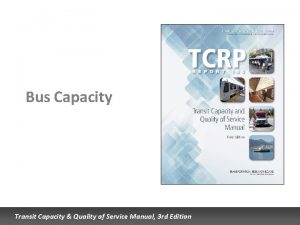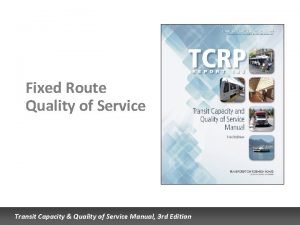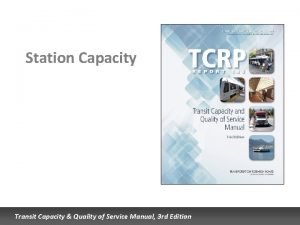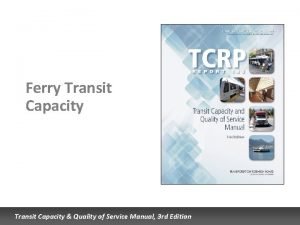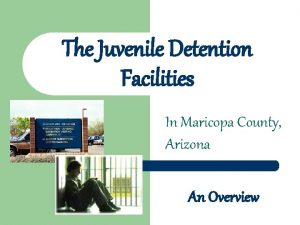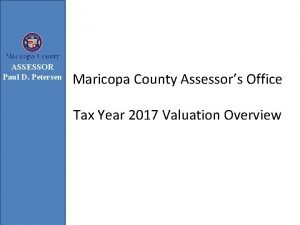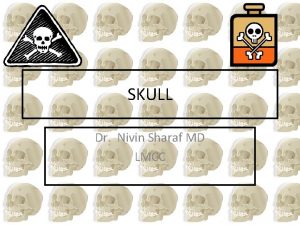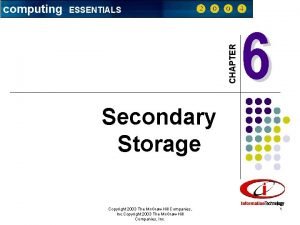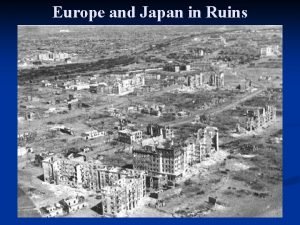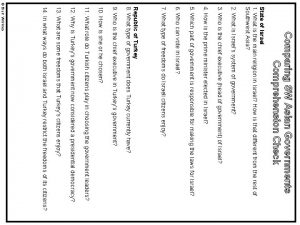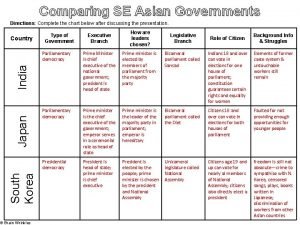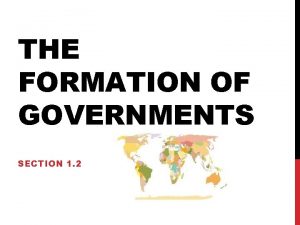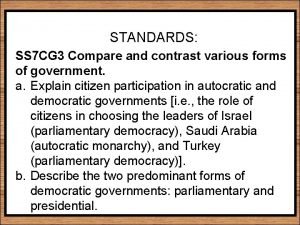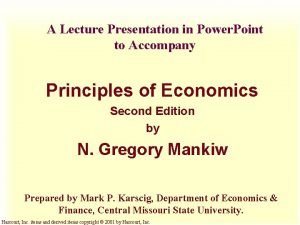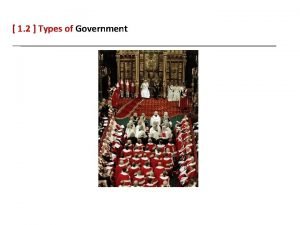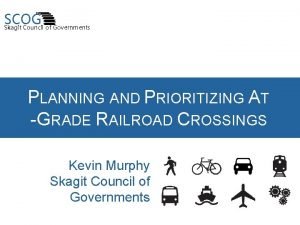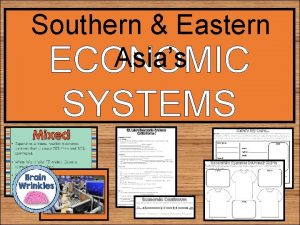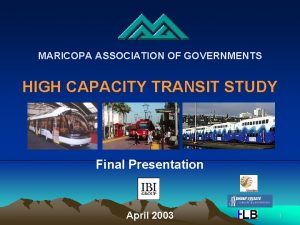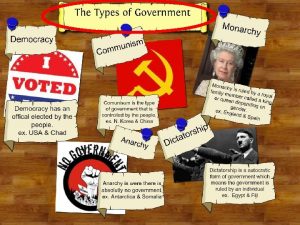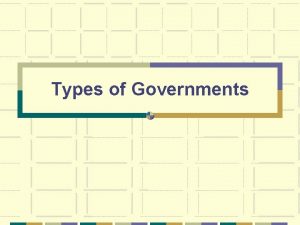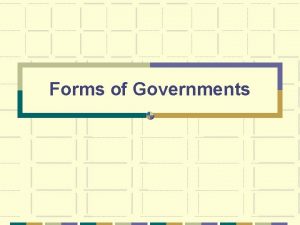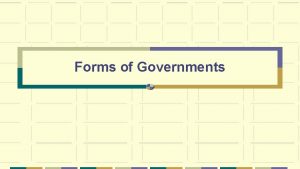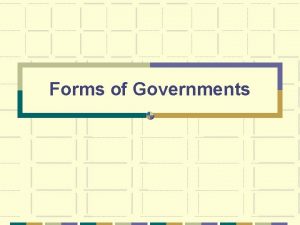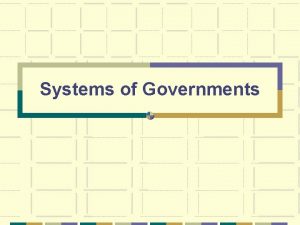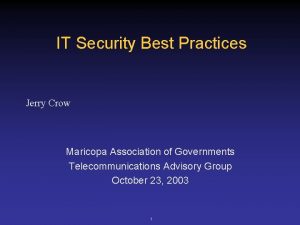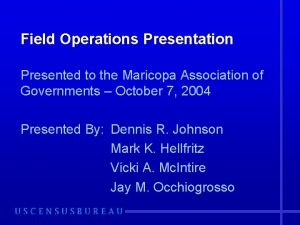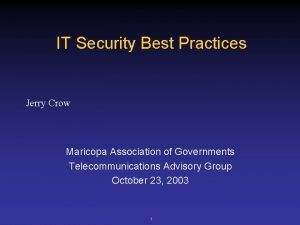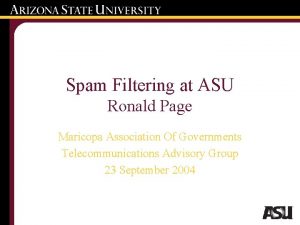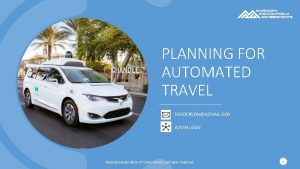MARICOPA ASSOCIATION OF GOVERNMENTS HIGH CAPACITY TRANSIT STUDY



































- Slides: 35

MARICOPA ASSOCIATION OF GOVERNMENTS HIGH CAPACITY TRANSIT STUDY Final Presentation April 2003 1

MARICOPA ASSOCIATION OF GOVERNMENTS HIGH CAPACITY TRANSIT STUDY Today’s presentation: • Project Overview • Conclusions & Recommendations 2

MARICOPA ASSOCIATION OF GOVERNMENTS HIGH CAPACITY TRANSIT STUDY Project Overview 3

THE PROJECT Identify forms of effective high-capacity transit services 4

PROJECT VISION • Commuter Rail along freight corridors • Light Rail alternatives in other corridors • Bus Rapid Transit alternatives in other corridors 5

PROJECT VISION Feeder bus networks serving rail stations and park & rides 6

PROJECT OVERVIEW MILESTONE 1 – Feb 2002 Public & Agency Involvement Plan MILESTONE 2 – May 2002 Needs and Opportunities MILESTONE 3 – July 2002 Identification of Alternatives MILESTONE 4 – Oct 2002 Evaluation of Alternatives MILESTONE 5 – Jan 2003 Regional High Capacity Transit Plan MILESTONE 6 – Apr 2003 Final Report 7

KEY TASKS UNDERTAKEN Jan 02 • Agency/Stakeholder Interviews • Evaluation of Peer Transit Systems • Preliminary Corridors/Technologies • Initial Corridor Assessment • Definition of Alternative HCT Networks • Preliminary Corridors Evaluation • Cost Effectiveness Rankings • Refined Costs and Ridership • Benefit-Cost Analysis April 03 • Specific Reappraisal of Commuter Rail • Application of MAG Model Forecasts 8

ORIGINAL CORRIDOR ANALYSIS 9

THE STUDY CORRIDORS • Commuter Rail: – BNSF – UP Yuma – UP Southeast – Up Chandler • Express Bus: – US-60 – I-10 West – Loop 101 W. Valley – Loop 101 E. Valley – Loop 202 – Loop 303 – I-17 North • Light Rail/Dedicated BRT: – Baseline – Bell – Camelback – Chandler Boulevard – Glendale/Cactus – 59 th Avenue – I-10 West – Main Street (Mesa) – Metrocenter – Northern – Power – SR-51 – Scottsdale/Rural – UP Chandler – UP Tempe 10

COMMUTER RAIL MODEL RESULTS : Peer Comparison • MAG corridors broadly in line with peers Line Distance (miles) Boardings per Mile MAG COMMUTER RAIL SKETCH PLAN FORECASTS BNSF 28 8, 073 291 UP Yuma 33 6, 017 185 UP Southeast 36 4, 552 126 Los Angeles Metrolink IE-OC 59 3, 003 51 San Diego Coaster 43 5, 000 116 Dallas Trinity Railway Express 37 5, 900 159 San Jose Altamont Commuter Express 82 3, 300 40 Toronto Go Transit Lakeshore East 42 40, 715 969 Chicago NICTD Southshore Line 90 12, 800 142 EXISTING COMMUTER RAIL 11

MARICOPA ASSOCIATION OF GOVERNMENTS HIGH CAPACITY TRANSIT STUDY Conclusions and Recommendations 12

CONCLUSIONS • Arterial-based LRT/BRT Network – – Densities generate grid-based network Most corridor demand more BRT suited Later growth may require LRT Certain exceptions (e. g. Bell, Glendale) • Commuter Rail – Can provide regional connectivity – Longer-haul trips for conventional commute – Contribution limited for non-commute trips 13

RECOMMENDED NETWORK (BRT/LRT corridors not alignment-specific) 14

COMMUTER RAIL • Phase 1 Service – 3 Peak Period Trains, inbound am, outbound pm • Phase 3 Service – – 15 minute peak service inbound 30 minute peak service outbound Off-peak service (30 to 60 min frequency) Reverse commute • Intermediate phasing will vary by corridor, ridership, funding 15

COMMUTER RAIL: OVERVIEW Corridor & Phase Total Capital Cost ($ millions) Daily Ridership BNSF PH 1 $353. 48 6, 391 BNSF PH 3 $741. 64 16, 145 UP Southeast PH 1 $282. 88 2, 235 UP Southeast PH 3 $608. 84 6, 471 UP Yuma PH 1 $190. 28 4, 722 UP Yuma PH 3 $471. 67 12, 034 16

BRT/LRT: OVERVIEW LRT Corridor 59 th Avenue Capital Costs ($M) Daily Ridership $727. 81 12, 829 $1, 102. 24 19, 750 Camelback Road $349. 36 8, 126 Central Avenue South $228. 03 5, 749 Chandler Boulevard $683. 75 12, 226 Glendale Avenue $429. 22 7, 226 I-10 West $399. 34 13, 765 Main Street $373. 63 9, 697 Metrocenter/I-17 $337. 65 8, 848 Power Road $465. 10 8, 653 $1, 010. 84 20, 672 SR-51 $823. 28 12, 334 UP Chandler Branch $460. 86 12, 534 Bell Road Scottsdale Road 17

PHASING SUMMARY Potential Near-term Corridors Potential Medium-term Corridors Potential Long-term Corridors BNSF Commuter Rail (startup) (startup to Loop 303, ultimate to Bell) (ultimate to Loop 303) UP Southeast Commuter Rail (ultimate) (startup + reverse to Williams Gateway) UP Yuma Commuter Rail (startup) (ultimate) UP Chandler Branch (BRT/LRT) 59 th Avenue (Glendale to I-10 West) Bell Road (Scottsdale to 59 th) 59 th Ave (Bell-Glendale, I-10 W to Baseline) Bell Road (59 th to Loop 303) Camelback Road Central Avenue South Chandler Boulevard Glendale Avenue I-10 West Main Street 18

RECOMMENDED NEXT STEPS • Corridor-Specific MIS/AA Packages for BRT/LRT Opportunities: – Alignment/technology alternatives e. g. Bell, 59 th, Glendale, I-10 West – (existing MIS/EIR outputs: Scottsdale, Mesa, CPEV) – CP/EV Connections: Glendale, Metrocenter/I-17, SR-51, Scottsdale, Camelback 19

RECOMMENDED NEXT STEPS • Progress Commuter Rail Opportunities: – BNSF Grand Avenue/El Mirage relocation package – Develop specification for demonstration service – UP Yuma and SE: detailed ridership, revenue and cost appraisal of service, negotiations with UP 20

RECOMMENDED NEXT STEPS • Regional Management and Funding – Focus on positives for Regional funding: • Market & corridor segments (peak commute, campus trips • One-fifth of zones have 10%+ transit share – RTP corridors: refine prioritization of corridors 21

FINALLY • Good case for High Capacity Transit • Strong BRT and LRT grid substantially enhances: – Local mobility – Regional connectivity • Commuter Rail on a par or better than many recent new starts 22

MARICOPA ASSOCIATION OF GOVERNMENTS HIGH CAPACITY TRANSIT STUDY Final Presentation April 2003 23

MARICOPA ASSOCIATION OF GOVERNMENTS HIGH CAPACITY TRANSIT STUDY 24

MARICOPA ASSOCIATION OF GOVERNMENTS HIGH CAPACITY TRANSIT STUDY TRC Issues Resolution 25

ISSUES RESOLUTION • Commuter Rail was ‘out but now ‘in’? – – a perception from Oct 2002 Milestone 4 some cities concerns addressed Alternative technology review, reduced costs New population/employment major factor • Baseline Corridor? – Ridership review, but lower than dedicated BRT – Could be served by skip-stop service 26

ISSUES RESOLUTION • Grand Avenue BRT explored? – Cost estimates prepared at Glendale request – Best addressed in upcoming MIS • Time to Review Results needed – Agreed: Final Report available mid-April (milestones compendium) – Mgt Committee, TRC, Regional Council, information/discussion 27

ISSUES RESOLUTION • How was modeling addressed? – two stages • alternatives analysis • recommended Network – sketch Planning and MAG models used – MAG results 30% higher, expected – sketch plan results more realistic in NW Valley with limited arterials 28

ISSUES RESOLUTION • Plan not financially constrained? – Study intended to be unconstrained – Recommendations carried forward to RTP • Why 2040 as planning horizon? – Similar to Phase 1 RTP – In line with Draft 2 Socioeconomic Projections 29

PHASING SUMMARY 30

NETWORK: HEADWAYS 31

CORRIDOR EVALUATION 32

MODELED RIDERSHIP VOLUMES 33

Commuter Rail-LRT-BRT Modeled Boardings Surprise/Loop 303 Sta. Bell & Grand Sta. Buckeye Sta. Queen Creek Sta. 34

USING RIDERSHIP RESULTS • West Valley Growth: – address in future MAG model development • Connectivity boosts existing transit – esp. CPEV LRT ridership • Guides implementation priorities: – Incremental BRT development 35
 Transit capacity and quality of service manual
Transit capacity and quality of service manual Transit capacity and quality of service manual
Transit capacity and quality of service manual Transit capacity and quality of service manual
Transit capacity and quality of service manual Transit capacity manual
Transit capacity manual Mercy maricopa behavioral health
Mercy maricopa behavioral health Juvenile court durango
Juvenile court durango Paul d petersen
Paul d petersen Maricopa county department of transportation
Maricopa county department of transportation Parts of the skull
Parts of the skull Rad maricopa
Rad maricopa Design capacity and effective capacity examples
Design capacity and effective capacity examples Mass storage devices are specialized high capacity
Mass storage devices are specialized high capacity Different kind of governments
Different kind of governments Why do people create
Why do people create 3 political problems postwar governments faced
3 political problems postwar governments faced Comparing sw asian governments comprehension check
Comparing sw asian governments comprehension check Comparing sw asian governments
Comparing sw asian governments Comparing asian governments
Comparing asian governments Comparing asian governments
Comparing asian governments Comparing asian governments
Comparing asian governments Centre region council of governments
Centre region council of governments Comparing african governments
Comparing african governments The formation of governments 1-2
The formation of governments 1-2 Are local governments tax exempt
Are local governments tax exempt Are city governments tax exempt
Are city governments tax exempt Comparing sw asian governments comprehension check
Comparing sw asian governments comprehension check How can governments ensure citizens are treated fairly
How can governments ensure citizens are treated fairly How do the governments of kenya and nigeria compare?
How do the governments of kenya and nigeria compare? Comparing sw asian governments
Comparing sw asian governments How are governments classified
How are governments classified The formation of governments 1-2
The formation of governments 1-2 Governments can sometimes improve market outcomes examples
Governments can sometimes improve market outcomes examples What are the three ways to classify governments
What are the three ways to classify governments Skagit council of governments
Skagit council of governments Liberals wanted governments to be based on
Liberals wanted governments to be based on Se asian economies comprehension check answer key
Se asian economies comprehension check answer key
